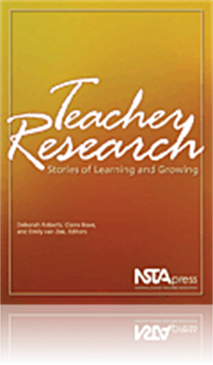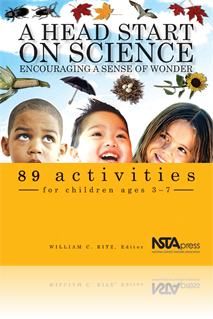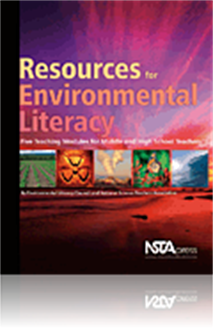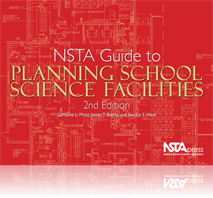All Book Chapters
Book Chapter
How Can Playing With a Motion Detector Help Children Learn to Write Clear Sequential Directions?
Kathleen Dillon Hogan is a kindergarten teacher in the Calvert County, Maryland, public schools. When this paper was written, she was a first-grade teacher at Hyattsville Elementary School in Hyattsville, Maryland. Kathleen heard a colleague describe...
Book Chapter
This curriculum, A Head Start on Science, was written to help adults facilitate young children’s learning as they work as partners to explore their world. This complimentary Introduction serves as a navigational tool for early childhood teachers ...
Book Chapter
Introduction: The Environmental Context
The argument for teaching science in the environmental context is based on the reality of the science-environment relationship and on the potential that contextual teaching has for contributing to valuable student learning. At the same time, it must ...
Book Chapter
As stated in “About This Book,” the author isn’t going to take the usual approach to the subject of chemistry. Because virtually all explanations of chemical reactions are based on our current model of atoms and molecules, the first thing to do...
Book Chapter
At the end of the first chapter, you realized, hopefully, that the model of an atom that we have so far (Rutherford’s model of a concentrated positive nucleus with negative charges around it) doesn’t go very far in helping us explain observations...
Book Chapter
In thinking about a title for this chapter, the word periodicity came to mind. I was sure this had some kind of pop culture reference. After discussing this with my wife, we figured I was thinking of synchronicity, which is a reference to music b...
Book Chapter
Let’s Get Together … Yeah, Yeah, Yeah
Ah yes, the theme song from one of the strangest movies of all time—Parent Trap. The original, that is, with Hayley Mills. I was in love with her back then. So naturally, I would choose that phrase to title a chapter on how atoms combine to form mo...
Book Chapter
We now know enough about atoms and how they combine to investigate a number of different chemical reactions. We’ll even be able to represent those reactions with symbols that tell us how many of each kind of atom we begin with and how many of each ...
Book Chapter
The word organic has lots of meanings in everyday life. Organic vegetables are ones grown without pesticides and organic beef comes from cattle that haven’t been given antibiotics. When it comes to chemistry, organic sometimes means something el...
Book Chapter
Advocacy and the Planning Process
Science educators believe that students construct their knowledge of the natural world best in safe, secure, and stimulating learning environments. In order to achieve these goals, teachers, researchers, and planners must become advocates for the sch...
Book Chapter
Current Trends and Future Directions in Science Education: Breaking Down the Walls
The simplest educational concept—and perhaps the most significant—to consider in designing tomorrow’s science programs is inquiry. In keeping with the Standards’ strong emphasis on inquiry-based programs, students increasingly will be explori...
Book Chapter
In order for students to inquire confidently, we must create safe classroom environments. Safety is not just a set of rules but a state of mind, and perhaps, most importantly, it is an attitude and a set of skills that carry over into a students’ d...
Book Chapter
Designing Facilities for the Middle School (6-8)
A high-quality middle school science program requires science classrooms with safe, well-designed laboratory space, and school designers must consider the distance students will have to travel to these classes. Trying to balance high quality science ...
Book Chapter
Designing Facilities for the High School (9-12)
When we participate in a school building program, we create learning environments that will last for many decades. So a major principle of good science facilities planning is to avoid building for a single curricular model. Since continued change in ...
Book Chapter
While everyone in a school community should share responsibility for the “greening” of a school, it is often the science teachers who make the best use of these facilities, basing their lessons on the components of a green school that have been b...






